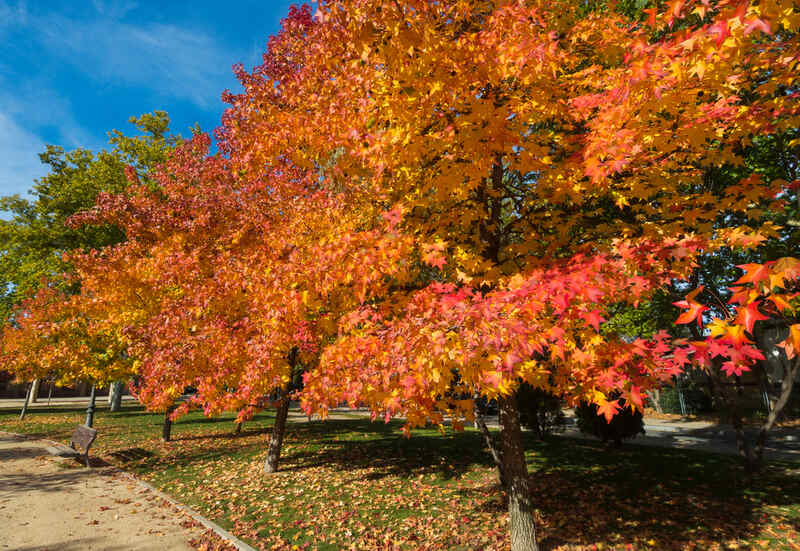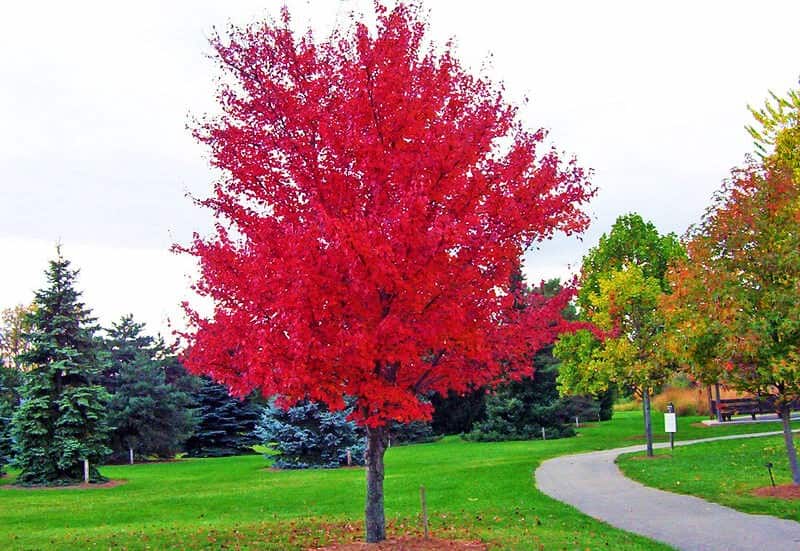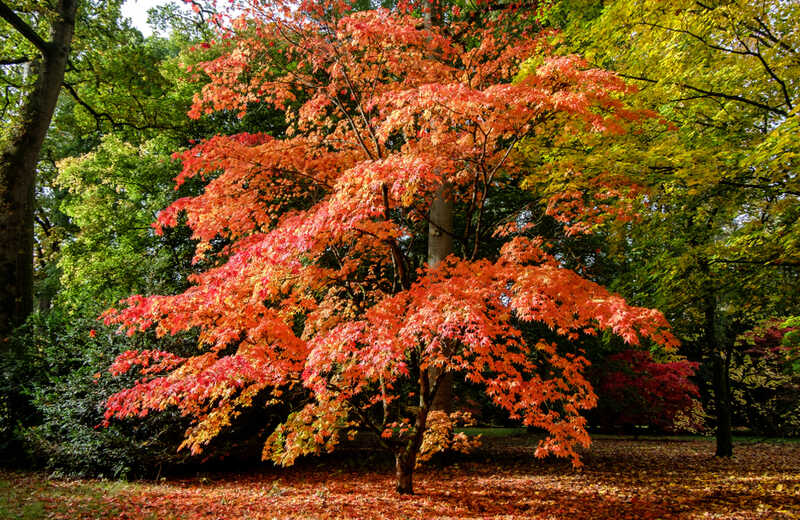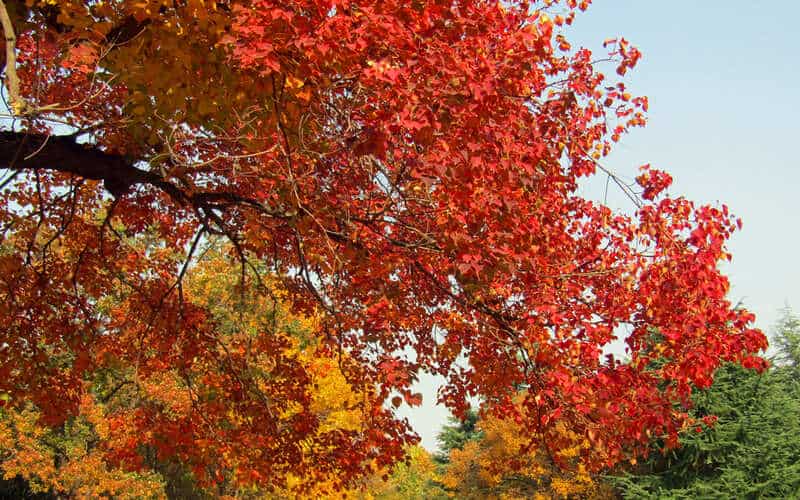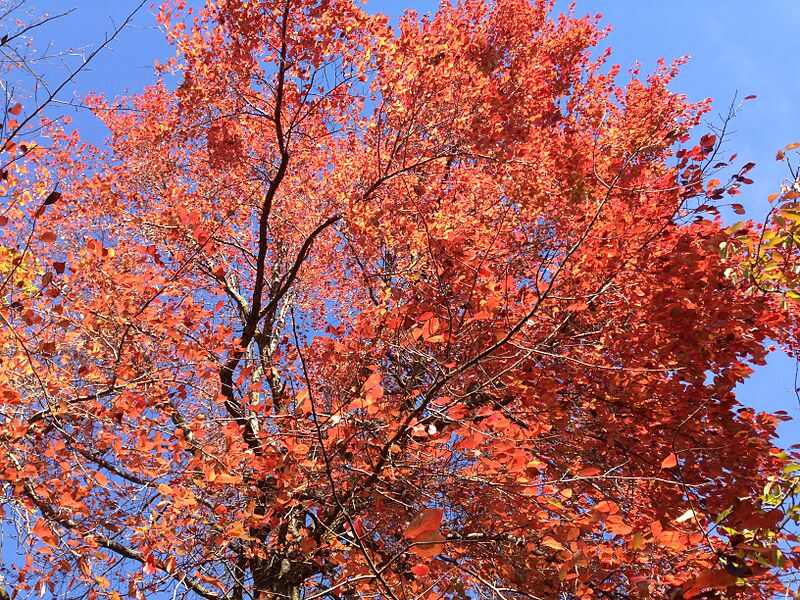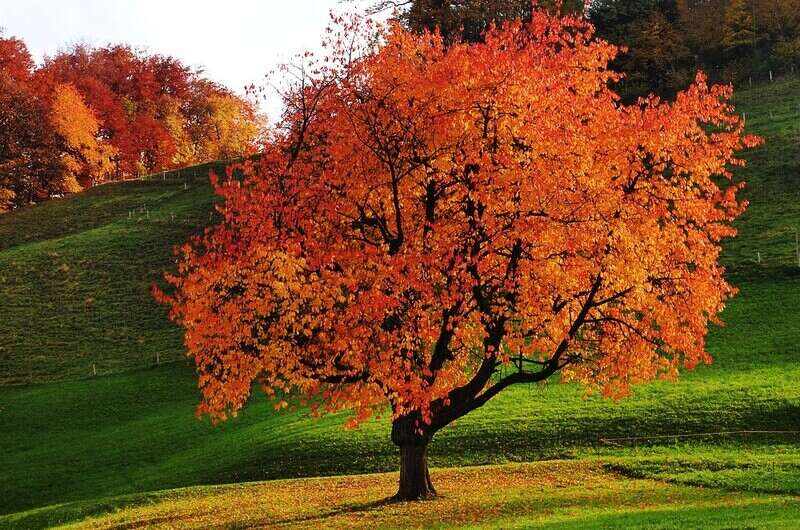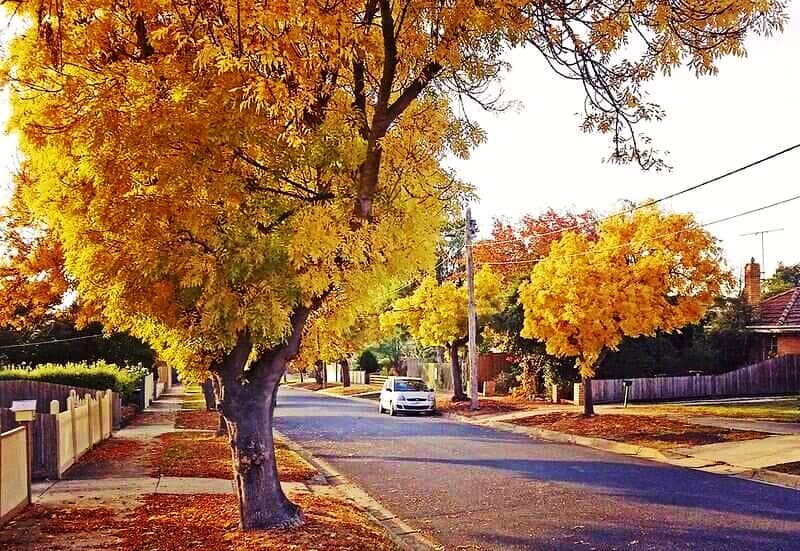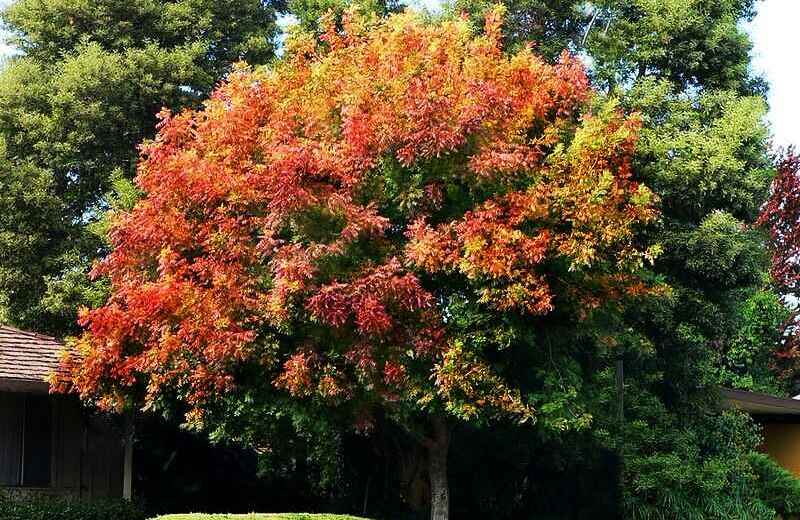To say that autumn in Australia is picturesque is an understatement. Starting on the first day of March and ending on the last day of May, the land is bathed in gorgeous colours of the sunset.
Trees in autumn prepare for the colder months ahead by changing from green to warmer shades. One thing’s for sure, we have more than enough deciduous trees to paint the town red, literally.
The names of these autumn trees are worth remembering for your next trip to the nursery. Here are our top picks:
Ginkgo biloba
No autumn in Melbourne would be complete without ginkgo trees. Also known as the maidenhair tree, the ginkgo biloba is a deciduous tree that turns a bright golden yellow colour during autumn. Their fan-shaped leaves may look dainty, but these trees can grow to a massive height of 30m over time. We’re talking about hundreds of years of growth here. Ginkgo trees may be quite large for a typical Australian garden, but you can still plant them in your yard as they’re slow-growing.
Being a dioecious plant, a ginkgo can be either male or female. These trees are also a good match for Perth and Sydney gardens, as ginkgos thrive in areas where there is full sun and well-drained soil.
Ginkgos are a popular choice among urban planners for lining city streets and parks because they’re practically indestructible, which means the cost of maintaining them is low. You can say that they’re almost impervious to disease, pollution, and pest infestation. The ‘last one standing’ is what I like to call this tree.
With its blazing golden foliage and near-Superman genes, the ginkgo can be the ultimate tree if not for one tiny issue: the fruits of female ginkgos stink. A quick cleanup is all you need to remedy this problem, but you may need to wear a mask if you’re to finish the task.
Liquidambar
If you’re looking for large hardwood trees that give serious autumn vibes, liquidambar is the tree for you. Their conical structure and flame-cloured leaves make liquidambars easy to spot, especially when the weather is colder. Chilly autumn nights make liquidambar’s yellow, orange, red, and purple leaves all the more vivid. You’ll be treated to these magnificent colours until the end of the autumn season, as liquidambars are among the last trees to shed their leaves in the fall.
Nicknamed sweetgum because of their sweet-smelling resin, the liquidambar is a gentle giant that loves full sun. You won’t even have to fuss around with the kind of soil to plant them in, as these trees are fairly easy to grow. These statuesque trees grow to a height of 25-40m tall and are perfect for wide, open spaces.
If you’re thinking of having a liquidambar in your yard, go for smaller varieties like ‘gumball’ and ‘parasol’. With a height of 3-5m, these dwarf cultivars are better suited for home gardens.
Lipstick maple
The lipstick maple tree has foliage that stands up to its name. These deciduous trees have an elegant upright form and star-shaped leaves that become stark red in the fall. We’re talking about autumn colours in the deepest, richest hues of crimson.
Varieties of this tree go by names you’ll hear from a cosmetics company. Go for ‘October Glory’ and ‘Fairview Flame’, which are two of the most popular lipstick maples around.
Japanese maple
Japanese maples are impressive to behold from afar, and just as breathtaking up close. The star-shaped leaves make this tree a standout in any garden. It will be hard to miss the Japanese maple during autumn, as its leaves turn a glorious shade of red, yellow, orange or purple.
There are many varieties of Japanese maples in Australia, with most of them growing well in Sydney and Perth gardens. You can enjoy more fall foliage up close by planting Japanese maples in your own yard, as these trees can thrive in small spaces including large pots.
Chinese tallow tree
The Chinese tallow is a medium-sized tree with rounded leaves that turn yellow, orange, and magenta in the fall. These trees have a spreading canopy and can reach a height of 7-18m tall.
As with other hardy deciduous trees, the Chinese tallow tree is not particular with any soil type. They’re fairly drought-tolerant, but need deep watering during long, dry months to prevent early leaf drop and pale-coloured leaves.
Tupelo
One look at the tupelo and you’ll understand why this tree has become an autumn icon in Melbourne, Adelaide, Perth, and Sydney. With glowing autumnal red-orange leaves, dark branches, and a beautiful pyramidal shape, the picture-perfect tupelo has earned its reputation as a feature tree in parks and public gardens.
These striking autumn trees can reach a height of 18-30m and are perfect for spacious areas. They grow well in moist, well-drained soil and under full sun. Oval-shaped leaves form the tree’s dense foliage, which turn a brilliant red in the fall.
Flowering cherry
Name a favourite flower for wedding themes and cherry blossoms will definitely come up. Flowering cherries may be famous for their pink spring flowers, but did you know that the autumn foliage of these trees are equally stunning as well?
If you’re living in colder regions in Australia, you can plant these trees for some autumn colour in your garden. Flowering cherry leaves transform into deep shades of yellow, orange, and red in the fall. With some sun and well-drained soil, your yard will enjoy different colours from your flowering cherry tree as the seasons change.
Golden ash
The name of this beloved autumn tree says it all. The leaves of golden ash trees turn from yellow in spring, to pale green in summer, to a dazzling golden colour in autumn.
Melbourne, Adelaide, Sydney, and Perth climates are ideal for growing golden ash, as these trees prefer moist, cool conditions.
Claret ash
Claret ash trees are named for their autumn foliage, which change to a purplish deep red during this season. Well-loved among garden owners, these fall trees are drought-tolerant and are not particular with any soil type.
Claret ash trees can be found along the coastline and regional areas of NSW, all the way to Queensland’s Darling Downs. In Sydney, these splendid trees enjoy a reputation as one of the city’s preferred street trees because of their ease of maintenance and lovely autumnal colour.
Chinese pistachio
Chinese pistachios are deciduous trees that become yellow, orange, and red in the fall. The leaves themselves are an attraction, and the dense canopy complements the foliage nicely.
With a height reaching 8m, you can plant a Chinese pistachio in your backyard. Their compact size also makes them ideal as street trees.
Crab apple
There’s no question why crab apples belong to the list of best autumn trees in Australia. They are one of the most useful and multi-purpose trees on this list.
Crab apple trees are grown to aid in cross-pollination of other apple trees, and also for their ornamental appearance. The autumn season sees the tree dotted with small crab apples, with leaves turning a warm orange red colour. Apart from its autumn foliage, orchard and garden owners love crab apple trees for another reason: they are easy to grow in your yard and not too picky about their planting conditions.
Pick the best autumn tree for you
Growing an autumn tree in your own yard is one of the best things you can do for your garden. These plants just keep on giving. They beautify your property, provide shade and wood, and offer an occasional flower or fruit, depending on the species you have chosen.
To know which among these trees is well suited for your garden, consult with gardening specialists in your area. Not only will you be informed of the growing requirements for your preferred trees, you’ll also be guided on how best to maintain and care for them.



